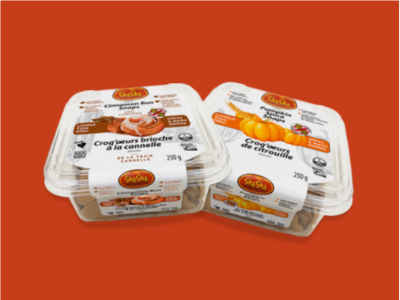The magic of sourdough bread

The magic of sourdough bread lies in the incredible synergy between wild yeast (fungus) and lactic acid bacteria, creating a natural fermentation process that transforms flour, water, and salt into a flavorful, textured, and nutritious loaf. In sourdough, wild yeast (often from the genus Saccharomyces) and naturally occurring lactic acid bacteria (like Lactobacillus) work together in a harmonious relationship:
Yeast (Fungus) and Its Role:
Fermentation: The wild yeast consumes sugars from the flour and produces carbon dioxide and ethanol as byproducts. The carbon dioxide causes the bread to rise, creating the dough’s beautiful air pockets and light structure.
Leavening and Texture: Yeast gives sourdough its volume and fluffy texture. It produces bubbles within the dough, which get trapped in the gluten network formed by the proteins in the flour.
Bacteria and Its Contribution:
Acidity and Flavor: The lactic acid bacteria consume sugars as well, producing lactic and acetic acids. These acids give sourdough its distinctively tangy flavour. The acid also strengthens the gluten network, making a better dough structure.
Preservation: The production of acid also lowers the pH of the dough, making it less hospitable to unwanted microbes. Thus, the acid acts as a natural preservative and extends the bread’s shelf life.
Synergy in Action:
The yeast and bacteria live in a balanced ecosystem. The yeast produces carbon dioxide that helps the dough rise, while the bacteria create the acidity that gives the bread flavour and acts as a natural preservative.
The bacteria also produce enzymes that help break down complex carbohydrates in the flour, making more sugars available for the yeast. This cooperative relationship results in a more digestible bread, as the complex molecules are broken down, reducing phytic acid, an anti-nutrient.
Health Benefits of Sourdough:
Improved Nutrient Absorption: The breakdown of phytic acid allows better mineral absorption in the body.
Digestibility: The long fermentation process partially breaks down gluten and starches, making sourdough more digestible than standard bread.
Probiotics: While most probiotics are destroyed in baking, some of the beneficial effects of fermentation persist, such as prebiotics that support gut health.
In essence, the magic of sourdough bread comes from the collaboration between wild yeast and lactic acid bacteria. This results in a bread that is uniquely flavorful, nutritious, and crafted through a fascinating natural process that combines art, science, and centuries-old traditions.












